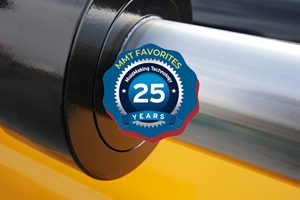How to Use Hot Runner Solutions to Help Your Customer
By offering creative, money-saving incentives to the customer, moldmakers can achieve an advantage over competitors.
For most domestic mold builders, business has been slow. The world market has changed dramatically. The percentage of molds being manufactured overseas continues to grow. Once reliable, customer loyalty is now quickly fading away into the past. As a result, the bottom line to remaining successful is to help the end user increase his or her profit.
Further incentives must be offered by the moldmaker to the end user than in the past. One such incentive is to suggest the implementation of hot runner technology into the mold that perhaps the end user did not consider. The rationale is simple: The North American molder is exposed to the same global business pressures as the mold builder. He must improve quality continually and still lower the price and delivery time. In many instances, molding with the use of hot runner technology offers the molder lower molding pressures, reduced cycles and less scrap material. All of these address the molder's requirement to reduce the piece price.
Cold Sprue Versus Hot Sprue
A request for a mold with a cold sprue always should be questioned. Why not use a hot sprue drop? There are only a few instances in which this type of product will not work. In most cases, a hot sprue drop will decrease the cycle time by greatly reducing the size of the sprue, thereby reducing the machine stroke and cooling time.
Why should you suggest this option? Because it is very likely that your competitor will not. That adds credibility to your business because it appears that you are interested in helping the molder maximize his profit. It just may be the reason why you are awarded the contract.
Standard JIT Systems
Most hot runner suppliers offer a line of complete or nearly complete JIT manifolds. Typically, they have either a set distance or a range of drop centers available. By using this option, one can save time and money. Deliveries of assembled standard manifold systems usually range from three days to three weeks. The advantages of designing these manifold systems into the mold speak for themselves.
Hydraulically Versus Pneumatically Actuated Valve Gates
Often, when valve gates are specified, the request is for hydraulic actuation. This election may be based on old technology in which air-actuated systems did not function as well as hydraulic systems. This is no longer true. Pneumatically actuated systems have a large advantage over hydraulic systems when cleanliness and service are considered. Not only is the oil eliminated, but often the plumbing also is eliminated for the actuation and cooling. The air and water are introduced to the cylinders through gun-drilled flow paths in the mold's clamp plate.
The molder's service requirements are reduced greatly when compared to a hydraulically plumbed, and water-cooled, valve gate system.
Prewired Systems
Available from most hot runner suppliers are systems that are prewired to the molder's specifications before they are shipped to the mold builder. They are preheated and tested by the hot runner manufacturer before being shipped - a procedure that can lead to a substantial savings for the moldmaker, because he or she will know the costs up front for quoting and will not to have to absorb additional hours for wiring the system. Furthermore, smoother mold tryouts are assured because all of the control zones have been tested and verified.
The moldmaking methods that have worked for your company in the past may not carry you into the future. You must be willing to change them if necessary.
Related Content
Making Quick and Easy Kaizen Work for Your Shop
Within each person is unlimited creative potential to improve shop operations.
Read MoreLaser Welding Versus Micro Welding
The latest battle in finely detailed restoration/repair of mold materials.
Read MoreHow to Correctly Size a Hydraulic Cylinder
This week Randy shares steps for correctly sizing a hydraulic cylinder on a mold.
Read MoreMold Design Review: The Complete Checklist
Gerardo (Jerry) Miranda III, former global tooling manager for Oakley sunglasses, reshares his complete mold design checklist, an essential part of the product time and cost-to-market process.
Read MoreRead Next
Integrating Hot Runner Mold Construction
Realize time and cost saving benefits from the use of integrated systems when compared to traditional hot runner manufacturing methods
Read MoreHow to Use Strategic Planning Tools, Data to Manage the Human Side of Business
Q&A with Marion Wells, MMT EAB member and founder of Human Asset Management.
Read MoreAre You a Moldmaker Considering 3D Printing? Consider the 3D Printing Workshop at NPE2024
Presentations will cover 3D printing for mold tooling, material innovation, product development, bridge production and full-scale, high-volume additive manufacturing.
Read More











.jpg;maxWidth=300;quality=90)









